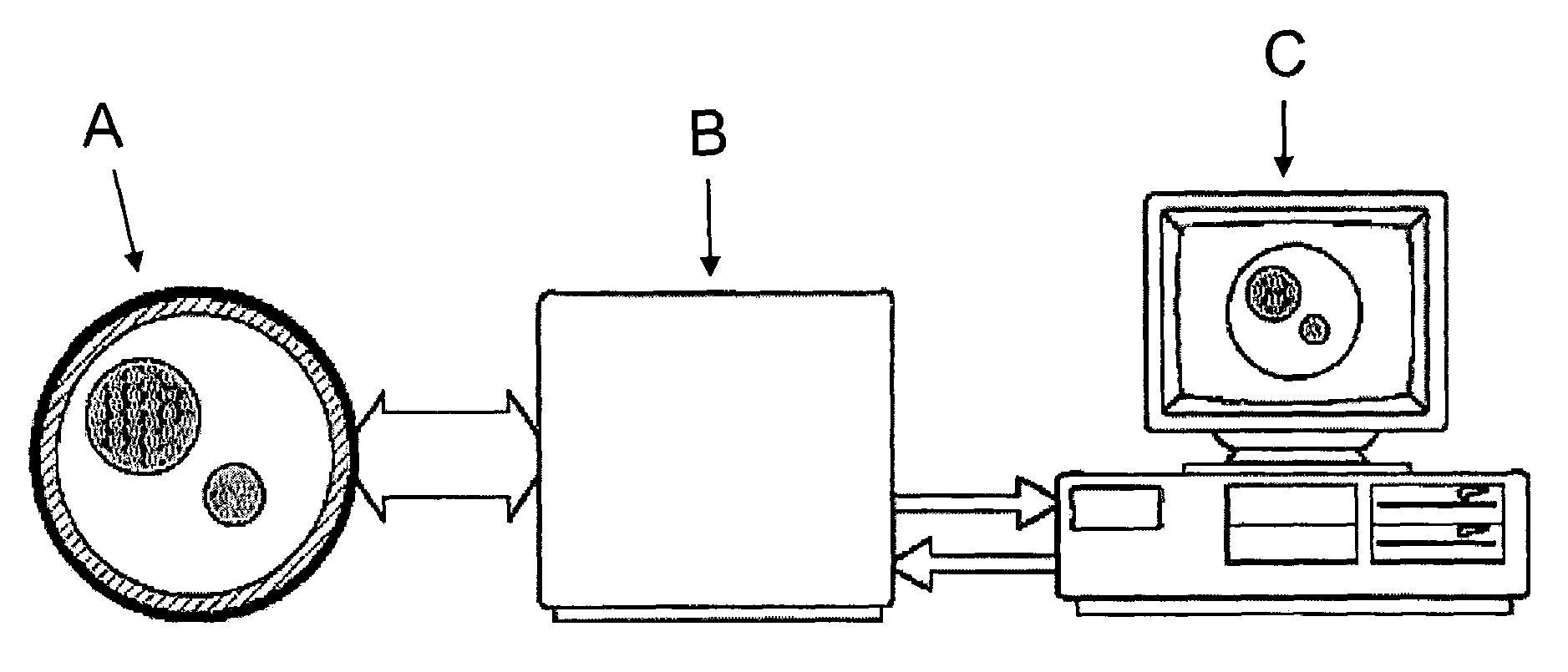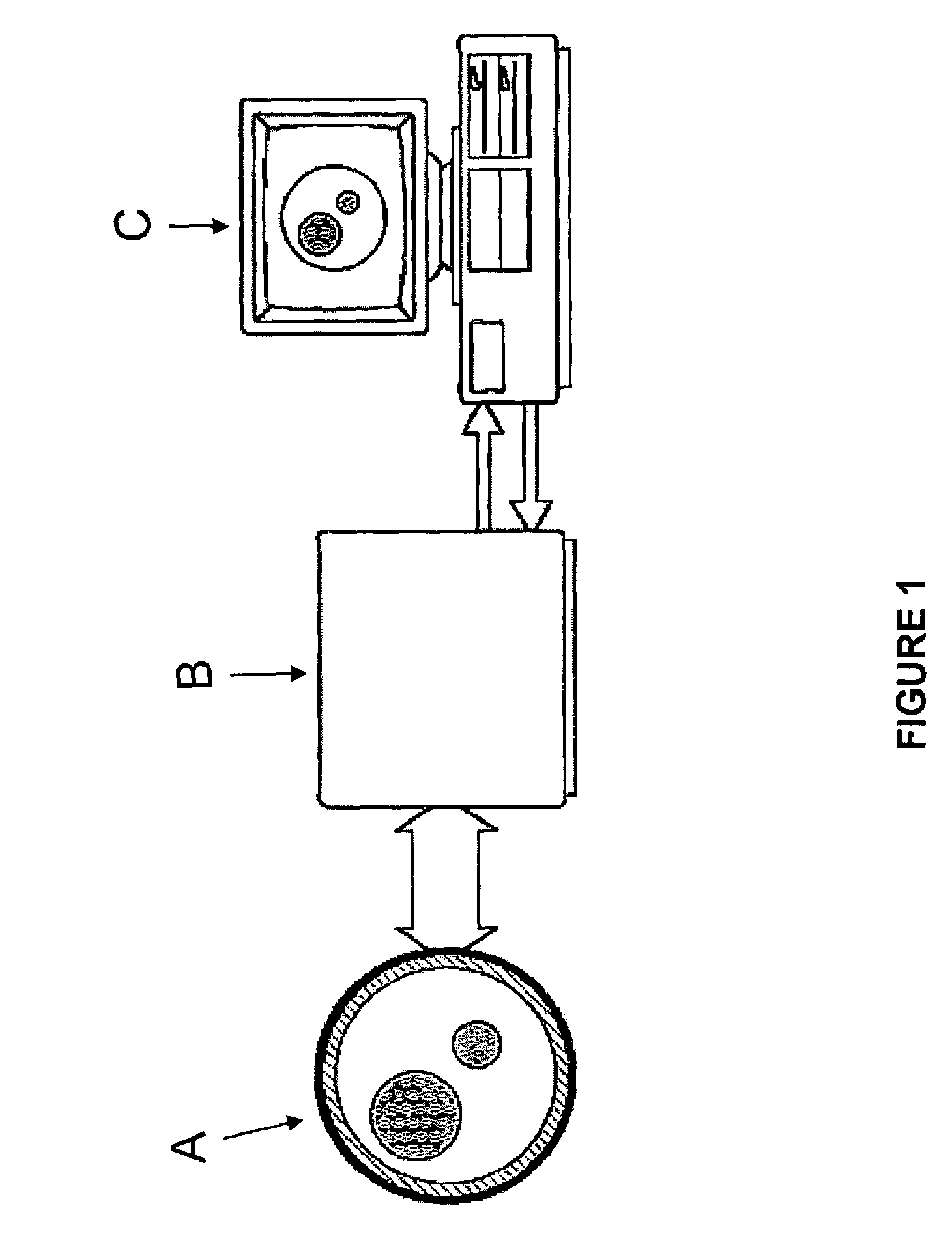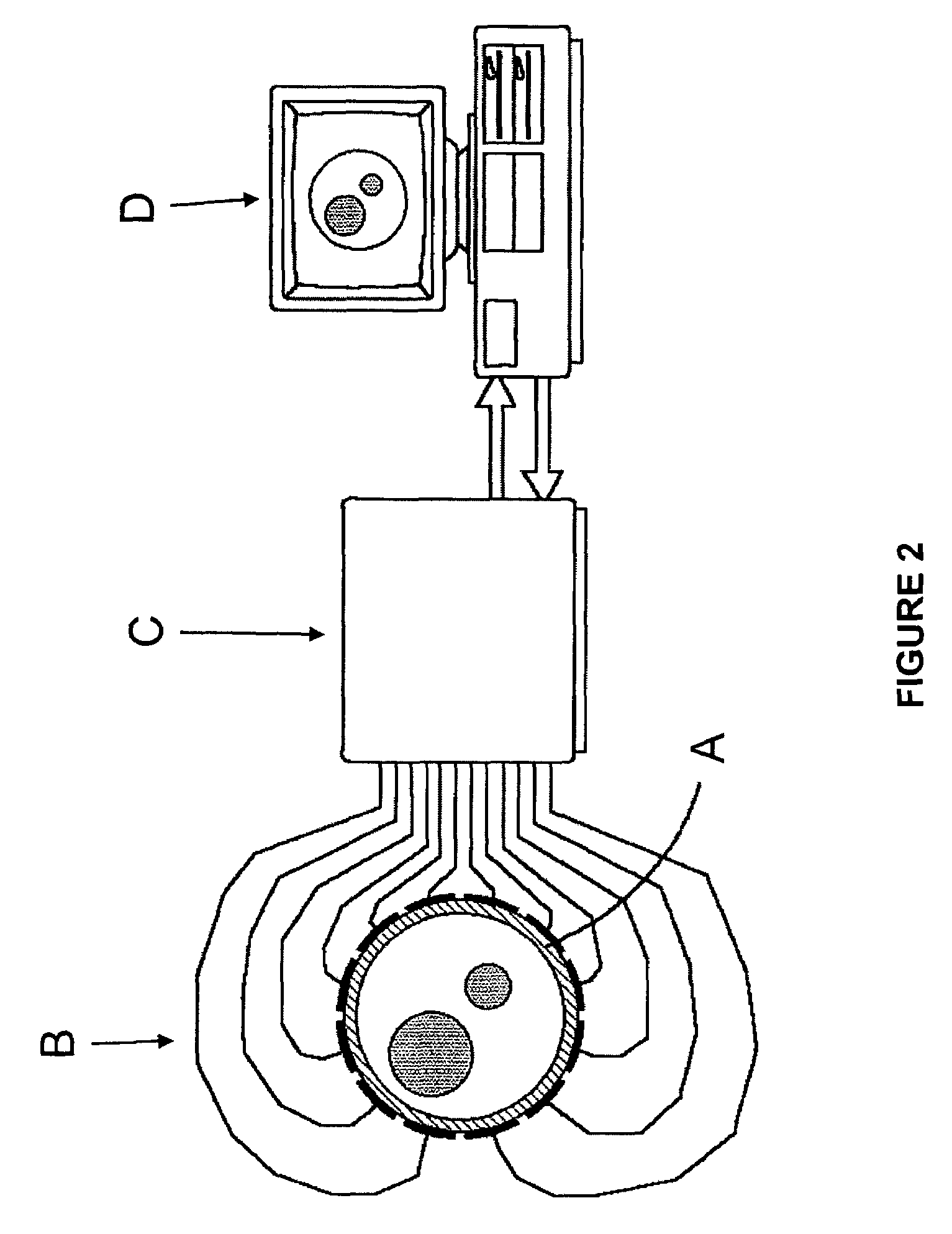Method for imaging multiphase flow using electrical capacitance tomography
a multi-phase flow and electrical capacitance tomography technology, applied in the direction of reradiation, electrical/magnetic detection for well-logging, nuclear radiation detection, etc., can solve the problem that the current availability of multi-phase meters suffers from an unwanted sensibility to changes in the flow regime, and the ionizing radiation methods produce images with the highest definition,
- Summary
- Abstract
- Description
- Claims
- Application Information
AI Technical Summary
Benefits of technology
Problems solved by technology
Method used
Image
Examples
Embodiment Construction
[0087]The new image reconstruction procedures of the present invention are based on heuristic global optimization methods, specifically simulated annealing and genetic algorithms.
[0088]A plurality of n metallic electrodes is placed around the periphery of a region to be imaged and electrical measurements of capacitance or resistance are collected between them. That is to say, m=½n(n−1) measurements (or data) are obtained. It is preferred that the data is capacitance data but it can also be resistance data. As shown in FIG. 3, the electrodes (B) can be rectangular in shape and be placed on the outer wall of a pipe (A) made of electrically non-conducting material, thus forming a sensor, which contains a multiphase or multicomponent flow (E). The aim is to use said measurement data to reconstruct an image of the spatial distribution of the dielectric constant (or permittivity) within the imaged region. Said permittivity distribution reflects the distribution of the substances filling t...
PUM
 Login to View More
Login to View More Abstract
Description
Claims
Application Information
 Login to View More
Login to View More - R&D
- Intellectual Property
- Life Sciences
- Materials
- Tech Scout
- Unparalleled Data Quality
- Higher Quality Content
- 60% Fewer Hallucinations
Browse by: Latest US Patents, China's latest patents, Technical Efficacy Thesaurus, Application Domain, Technology Topic, Popular Technical Reports.
© 2025 PatSnap. All rights reserved.Legal|Privacy policy|Modern Slavery Act Transparency Statement|Sitemap|About US| Contact US: help@patsnap.com



